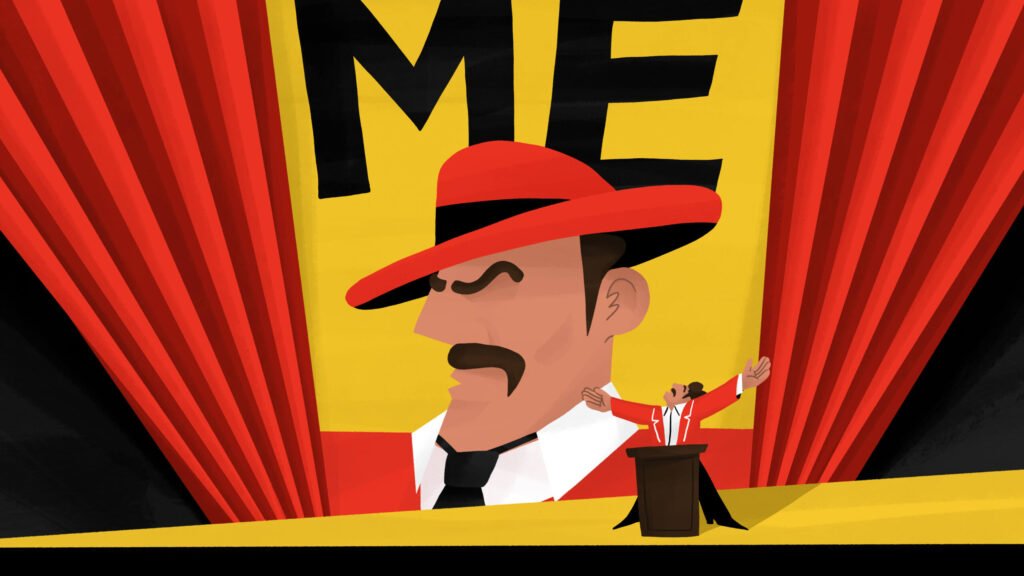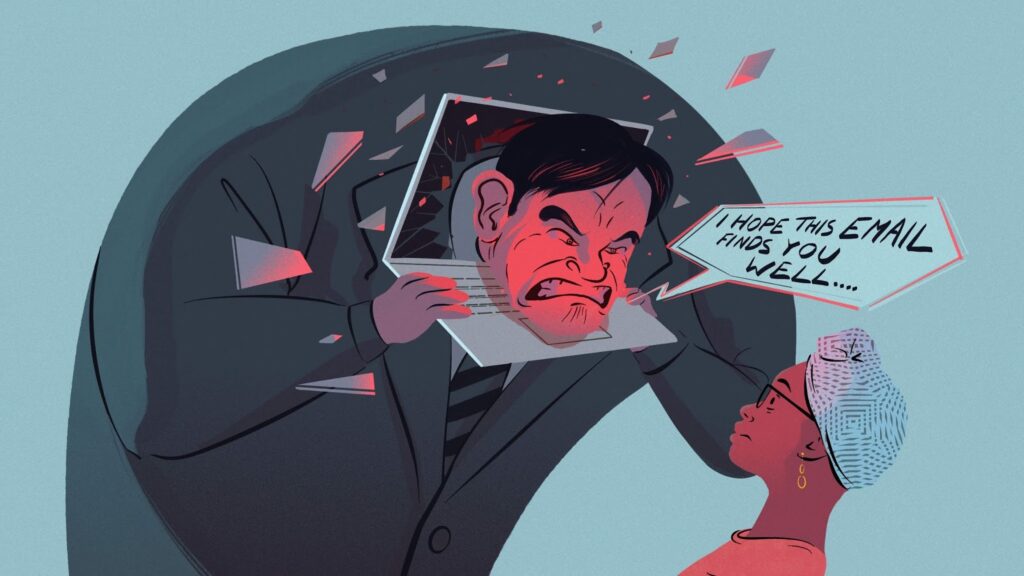When I worked in business development, it was my job to represent my overseas clients all over the UK. This meant giving presentations to audiences from 10 to 250 people, on a regular basis – sometimes up to five times a week!
Believe it or not, I was almost always nervous (especially in front of larger crowds, and more so when my clients were among the audience) but they always ran smoothly… More or less. Why?
Because I was prepared.
I planned my presentations in two phases. The first was planning and putting together the PowerPoint and the second was writing an accompanying script, which I believe is absolutely essential. But before I tell you why, let’s talk about the presentation itself.
Planning your presentation
In some cases, you might not have a lot of control over the order of slides or the images used in a presentation, which can be a good thing as it saves you a ton of work and there’s a good chance your presentation will have been put together by a professional designer – though this isn’t always the case.
However, if you’re creating your presentation from scratch, it’s a good idea to start with pen and paper before opening PowerPoint. In doing so, you’ll start automatically start thinking about the best order to display and convey information, as well as the key messages that you need to deliver. It’s much better to have this set out clearly beforehand, otherwise, you may end up completely restructuring your presentation before you’ve finished your first draft.
Content
Firstly, think about what information is needed in your presentation and what points are so important they need their own slide. Then, write down the order in which the slides should appear. If you want to change the order later on, that’s fine, but at least you’ve got a rough idea to start with.
Flow
The order of your slides is the key to creating a presentation with a natural flow, which is important for both you and your audience. I’ve had to work with presentations where the order of the slides didn’t make sense (to me at least), which made them much harder to deliver because the flow of my speech was disrupted.
So, when I’m making my own presentation, I always try grouping subjects together and let the slides naturally flow from one to another. For example, if was giving a presentation on a tourist destination with multiple airports and each airport has its own slide – it would make sense to order them one after the other, probably starting with the busiest and most popular for UK travellers.
Then, after the airports, I’d probably talk about transport links (taxis, shuttles, trains) so the audience knows how to get to their hotel. After transport, I’d talk about some of the hotels and after that, I might talk about tourist attractions… Get my point?
Keep it simple
When it comes to designing the layout and aesthetics of a presentation, remember that less is more. Avoid throwing in too many images on a single slide, don’t use ‘fancy’ fonts and don’t use ‘exciting’ backgrounds. Unless you genuinely have a good eye for composition, colour palettes, and design it’s probably best to play it safe.
Remember, visual presentations have three functions:
- To illustrate a point or display data that either backup or explain what you’re saying.
- To reiterate the key messages of your speech.
- To show nice pictures/videos to keep your audience either informed or captivated.
Also, when you do get started on the PowerPoint, keep a pen and paper close by. As you’re doing this, the words for your speech will come to you naturally and you won’t want to forget them.
Some additional tips
Avoid too much text – If your slides have too much text, some people (if not all) will be reading it rather than listening to you. Consider using bullet points, which are revealed separately, alongside your speech.
Avoid too many images – Again, less is more. Too many images and your slide will look cluttered and unprofessional.
Avoid animations and effects – Slide transitions, swooshing pictures and spinning text boxes… Do you really need them? Probably not.
Writing your script
So you’ve got your PowerPoint ready, now you need to write a script. If you’ve already got a presentation then you might think that writing a script is unnecessary, but I promise it will make a big difference to the overall success of your presentation.
It’s important to remember that what’s displayed on the big screen behind you, or on your shared computer screen, is one thing, but what you say during the presentation is — and should be — something else entirely.
The presentation is merely there to back up what you say (with facts, graphs, quotes and information) and add visuals to keep your audience’s attention. People don’t remember great presentations, they remember great presenters and great presenters use a script. So, with that in mind, here are some things that you might want to do when planning and rehearsing your script:
Audience Participation
When writing your script, be on the lookout for opportunities to include some audience participation, especially halfway through, or towards the end of a presentation. This gets people to focus on you when their minds start to wander, which is particularly important when you’re giving long presentations to people with short attention spans – which is most people.
I used to work in tourism, so I often got people to say “hello” in a different language at the start of a presentation. Or, if I noticed people getting fidgety, I would ask a question and get people to raise their hands… It’s a simple but very effective technique to keep all eyes on you.
- Highlight Important Points – Make them bold, italic, underlined or even a different colour. This is to help you remember the most important points throughout your presentation – and easily find them if you forget them during the presentation.
- Print – Always print your first draft and mark it with a pen. If you make changes, then print it again. We read printed text differently from how we do on screens, I guarantee you’ll spot more mistakes if it’s printed out.
- Pagination – Include page numbers either at the top or bottom of the page. If for any reason your pages get mixed during your speech, this will make sorting them much easier. You may also want to staple the final draft to avoid this happening, but remember your pages may still fall loose.
- Read Aloud – Always read the script aloud after printing, we speak differently to how we write and sentences that read well in your head might sound unnatural when spoken.
- Time Yourself – In my experience, presentations always last a bit longer ‘in real life’ than they do when rehearsing, so you should plan for this to ensure you don’t run out of time.
- Highlight (again) – This time with a highlighter pen, which will help your points stand out even more. Furthermore, the process of manually highlighting those points will help you remember the key messages even better.
- Jokes – Unless you’re a comedian, use jokes sparingly. I’ve made audiences laugh, but usually with off-the-cuff comments rather than anything scripted. Also, avoid poking fun at the audience, what might seem like a gentle jest in your head could be taken the wrong way by the audience, as I once learnt presenting to a crowd of 50 Glaswegians.
- Be ruthless with your work – As anyone who’s been to a writing class will know, you need to ‘kill your darlings’. This means omitting your most precious sentences, especially the self-indulgent ones. When you’re delivering a presentation, you don’t have much time and audiences don’t want to hear you ramble. So, when you’re reviewing your script, judge every line – if it doesn’t add anything, scrap it.
Now, most importantly, beware of taking your script on stage. The last thing you want to do is read from your script as you’ll come across as an amateur. This is why highlighting is so important, but you might prefer having simplified notes or flashcards. I personally do take a script on stage, but it’s stapled, paginated and has plenty of highlights – I also make a point to read and rehearse at every opportunity so it’s more of a safety net than a lifeline.
Remember, you don’t have to follow your script exactly. The importance of writing a script is so you can prepare what you want to say and learn it off by heart. This means that even if you veer off-topic, or something distracts you, you’ll be able to quickly — and smoothly — pick up where you left off.
Presenting, and public speaking in general, is a common fear for many people. Understandbly, if I can add. It’s scary. But with preparation, practice, and organised thought, that fear is replaced quickly by confidence.




